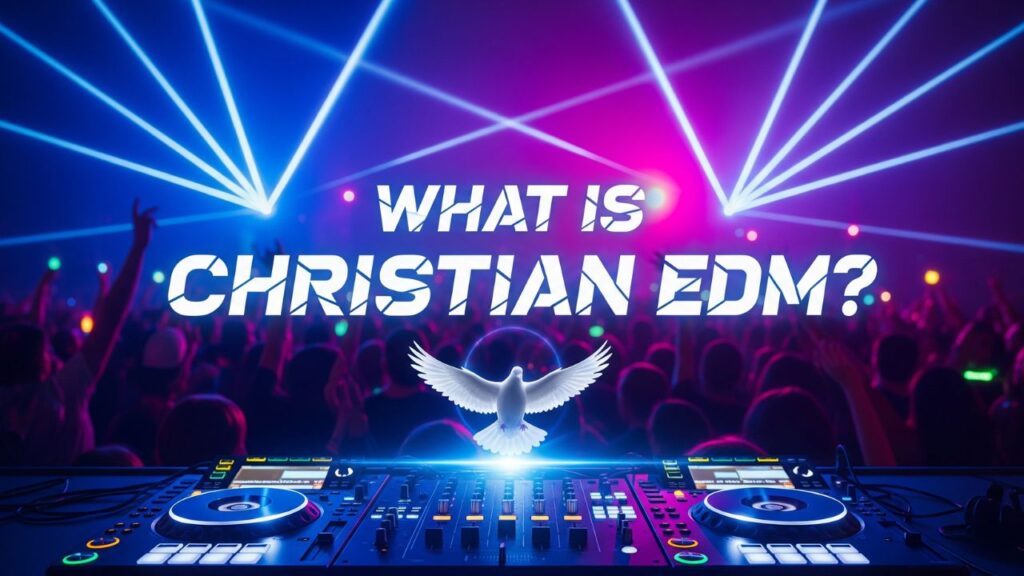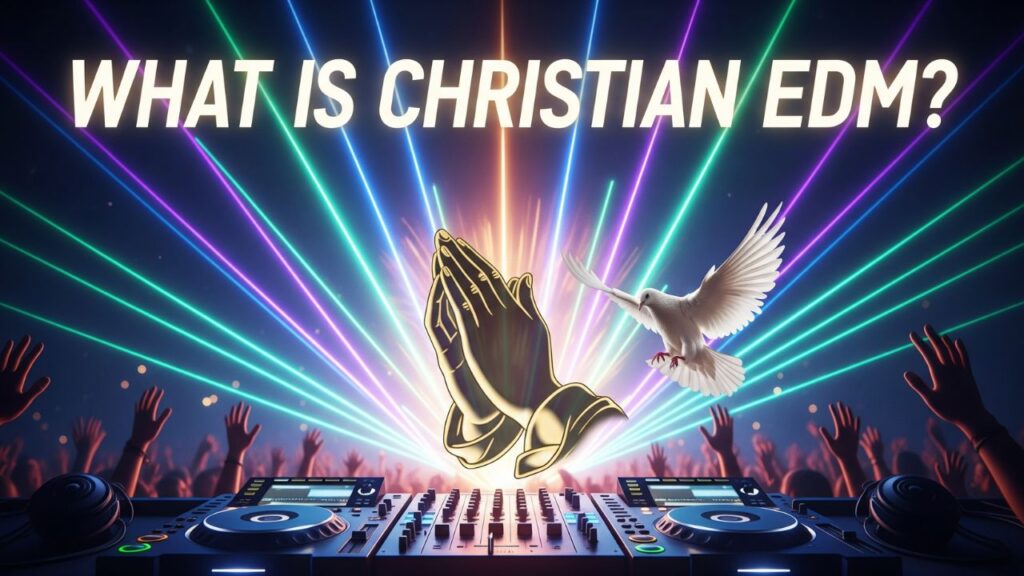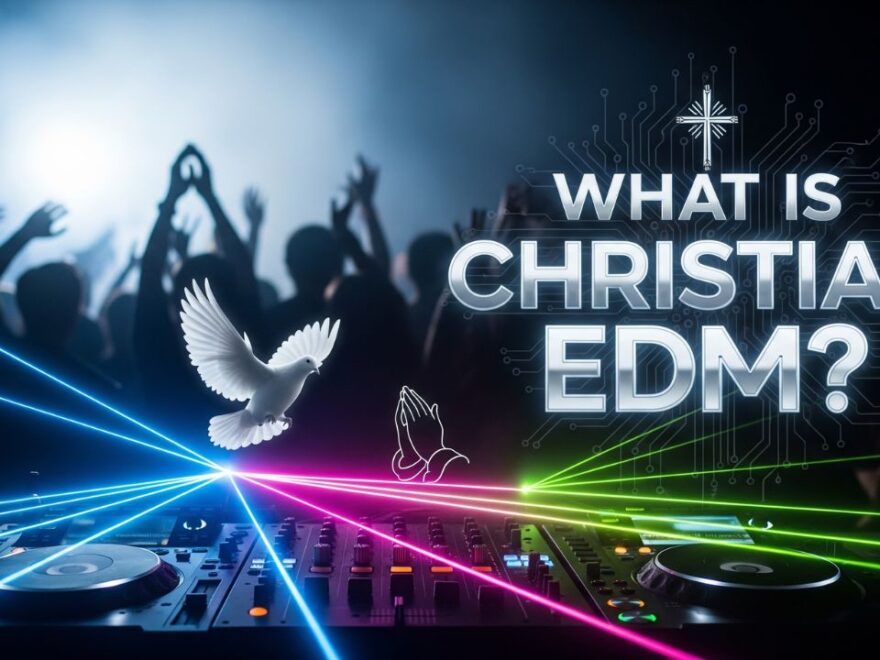What Is Christian Edm? You might do a double-take at the thought of evangelical Christianity and electronic dance music (EDM) in the same sentence. One evokes images of spiritual revival, the other, pulsing club nights. Yet, this seemingly impossible pairing has surprisingly deep historical roots and a fascinating philosophy behind it. If you’ve ever wondered how these two worlds collide, you’re in for an intriguing journey.
This isn’t just a quirky anecdote; it’s a real-world phenomenon, even the subject of serious academic research. Imagine evangelical missionaries actively present in Ibiza, the global epicenter of clubbing, or in the vibrant dance scenes of New York. What are they doing there? To truly understand, we need to rewind the clock much further back than you might expect.
From Hippie Counterculture to Holy Rollers: The Jesus People Movement
The story of evangelicals in today’s EDM clubs doesn’t begin with house music. Instead, it traces back to the 1960s, specifically the hippie counterculture and the rise of rock and roll. This era marked a significant collision between modern youth culture and evangelical faith, giving birth to a radical phenomenon known as the Jesus People Movement.
This youth-focused spiritual revival emerged directly from the West Coast hippie scene in the late ’60s. What started as a small coffee house ministry for hippies in San Francisco in 1966 rapidly gained momentum. By 1971, it had crossed the Atlantic, and by 1974, it had established a major cultural hub: the Green Belt Festival. This festival was specifically designed to blend faith with contemporary art and music.
Their approach was bold and immersive: they fully adopted the counterculture’s look and feel, from psychedelic art to Bibles written in street language, all set to folk-rock music. The crucial idea was to view youth culture not as an adversary, but as a mission field – a new frontier where they could connect with people on their own terms.
The Great Christian Rock Debate: Drawing the Line

Unsurprisingly, this radical new approach sparked immense controversy within the church, igniting the “Great Christian Rock Debate” that raged for decades. At its core was a timeless theological question: Does using secular music and style to spread a spiritual message truly connect with people, or does it risk diluting the faith itself? Where exactly should the line be drawn?
This debate largely split evangelicals into two primary viewpoints:
- The Separational View: This perspective held that the world is inherently sinful, and a strict, clear line must be maintained between it and the church. For proponents of this view, music was only acceptable if it was an explicit tool for ministry.
- The Transformational View: On the other side, these individuals argued that God can work through secular culture. They believed music could be appreciated as art for its own sake, its value extending beyond its ability to convert.
The opposition was fierce. Critics weren’t just debating musical taste; they saw it as a spiritual battle, with some even declaring Christian rock to be the “music of the antichrist.” The stakes felt incredibly high.
The Rise of Alternative Worship
As the rock debate continued, a new concept began to emerge: what if, instead of merely adding Christian lyrics to existing rock music, they could create entirely new, immersive worship experiences using the tools of modern culture? This thinking led to the birth of alternative worship, a term actually coined at the experimental Green Belt Festival.
The core principle of alternative worship was to intentionally engage with culture outside the traditional church building. In practice, this meant:
- Utilizing diverse mediums, from film to DJs.
- Shifting focus to multi-sensory, physical experiences like dancing.
- Moving worship locations from church sanctuaries to cafes, public parks, or even clubs.
This innovative approach fundamentally challenged and blurred the old rigid lines between what was considered sacred and what was secular, bringing us full circle back to the dance floors of Ibiza.
Justifying Faith on the Dance Floor: Meaning is Created
With this historical context, we can now understand the sophisticated theological reasoning behind an evangelical presence in a superclub. They aren’t just showing up; they are operating from a very specific and developed philosophical framework.
The million-dollar question remains: How do they justify using secular EDM, often associated with hedonism, for worship? The answer lies in a radical idea about where meaning originates. The core belief is that a song’s meaning isn’t fixed by the artist; instead, it is created in the moment by the listener, or in this case, the dancer.
Here’s their four-step “playbook” for this reinterpretation:
- Find a track with ambiguous, uplifting lyrics, like “love is the message.”
- Decide that the DJ’s or artist’s original intent doesn’t matter.
- Actively reinterpret that “love” as divine love from God.
- Utilize the music’s immersive, powerful vibe to create a transcendent worship experience through dance.
The ultimate goal is transformation. By reinterpreting the music, they believe they can transform the space itself. That nightclub, the quintessential secular venue, can, for a moment, become a potential place for a sacred experience. For a brief time, the line between the church and the world completely dissolves.
A Continual Adaptation

This fascinating journey, from 1960s coffee houses to today’s super clubs, is ultimately a story of continuous adaptation. As culture relentlessly shifts and changes, it prompts a powerful question for us all: Where might we see these unexpected intersections of faith and secular life emerge next? What new “mission fields” are on the horizon?
We’d love to hear your thoughts on this! Have you encountered similar fusions of faith and culture? Share your perspective in the comments below.




Leave a Reply